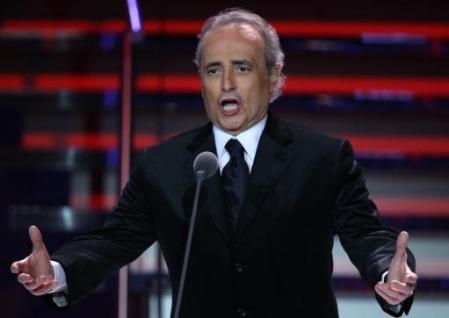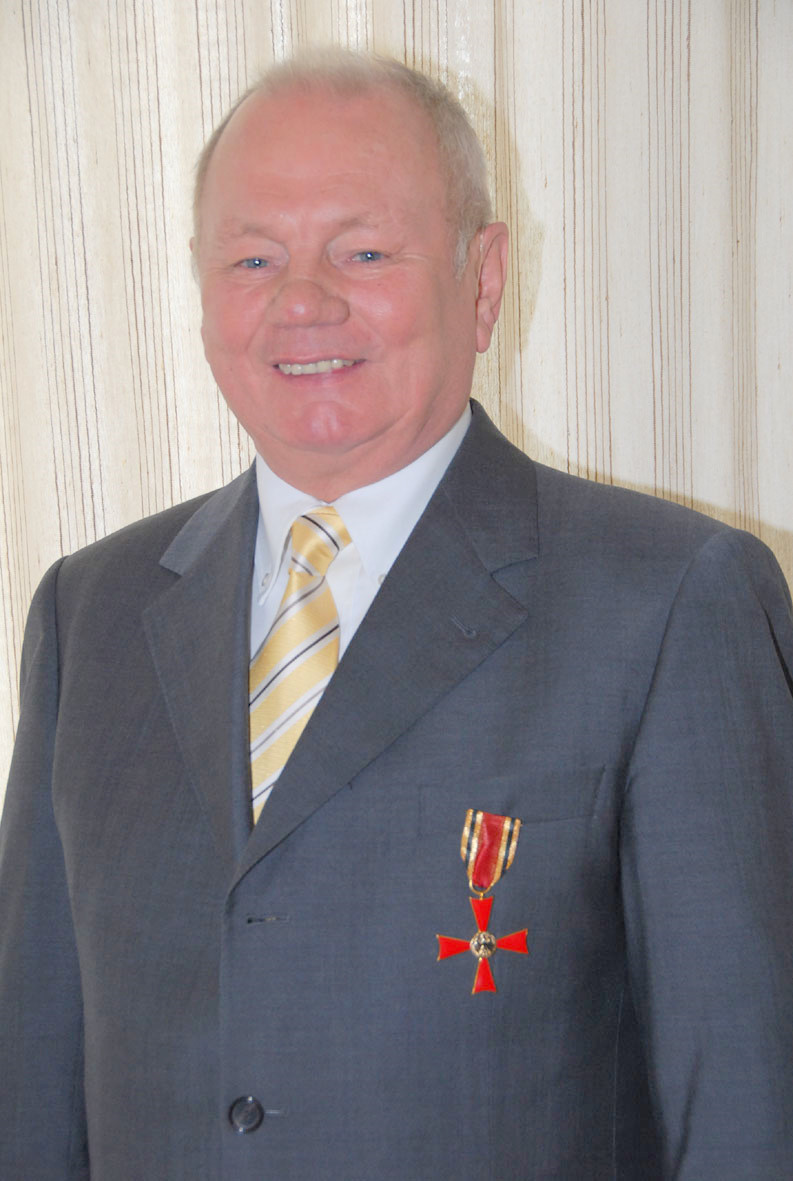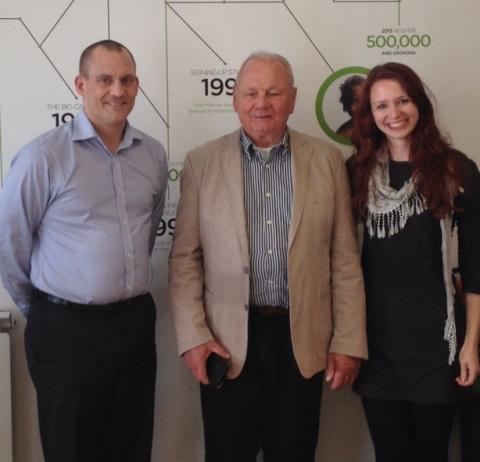On Tuesday afternoon, the Anthony Nolan head office had a very special visitor, with a truly incredible story to tell; a gentleman called Klaus Brandt, from Germany.
In July 1988, Klaus was living in the town of Fritzlar, north of Frankfurt, when he was diagnosed with leukaemia. He underwent a course of high-dose chemotherapy, as well as two autologous transplants, but relapsed both times.
Unfortunately, the transplant centre he visited in Berlin was only able to carry out transplants between related donors. After two relapses, this left him without any further options for treatment – and time was very quickly running out.
One day, and quite by chance, Klaus happened to read a magazine article about the legendary opera singer José Carreras, who’d successfully received a transplant from an unrelated donor to treat his acute lymphoblastic leukaemia in the USA. Curious to know more, he tracked down a related article in a scientific journal, which happened to include the name of the American transplant centre, as well as the name and contact details of the doctor responsible.

Opera singer Jose Carreras
Klaus decided to get in touch; his doctor wasn’t sure he’d get a response from overseas, but undeterred, Klaus decided to call the American doctor himself.
To his astonishment, the other man’s secretary put him in touch with a hotel in Berlin, where the doctor happened to be staying. Over the course of a short phone conversation, Klaus told his story – and the American doctor agreed to meet him in Seattle as soon as possible to discuss the possibility of further treatment.
Klaus’ daughter, who worked for the Lufthansa airline, got in touch with her colleagues in Seattle and explained that her father didn’t have much time left. Without hesitation, they supplied him with cheaper flights across the Atlantic.
The Seattle medical team examined Klaus, and agreed that his best chance of survival was a stem cell transplant from an unrelated donor. There was just one problem. At 51, Klaus would be the oldest patient ever to undergo a transplant. And because he’d relapsed twice before, his odds of survival were extremely low – perhaps around 10%.
Still, without a transplant, Klaus would most likely only survive for just a few more months. The American doctors put him in touch with Dr Goldman, a transplant specialist at Hammersmith Hospital in London.
Dr Goldman referred him to a colleague called Dr McCarthy, at Charing Cross Hospital. And Dr McCarthy contacted Anthony Nolan to start the hunt for a matching donor as soon as possible.
On Boxing Day in 1989, Klaus received a call. Anthony Nolan had found a match – a woman who was about to emigrate to Australia. There wasn’t much time.

Klaus wearing his medal awarded for services to the community
Dr McCarthy and the Charing Cross medical team put the transplant process into overdrive. Klaus underwent a quick round of high-dose chemotherapy to put his leukaemia into remission – and in early 1990, broke all records as the oldest ever stem cell transplant patient.
Not that he had time to celebrate. After the transplant, he was kept in isolation for two months, and then left the confines of the hospital for a nearby hotel, allowing him to come back in for regular daily check-ups. Klaus used the next three months to visit the various corners of London, and travelled as far afield as Brighton, Southend-on-Sea, and Devon.
Even once his extended stay in Charing Cross was over, Klaus had to fly back across to the hospital for check-ups every week – an expensive routine, only made possible thanks to his daughter and the kindness of her colleagues at Lufthansa.
Despite his extremely low odds of survival, and all of the challenges he faced along the way, Klaus is still here today. Later in 1992, he visited us for the opening of our head office as the personal guest of HRH the Duchess of Kent. In the years following his retirement, he was awarded a Federal Cross of Merit by his country for his services to his local community.
In 1993, he went to visit his lifesaving donor in Australia.
And on his 60th birthday and the seventh anniversary of his transplant, his donor came to celebrate with him in Fritzlar – along with his entire German medical team.
We were delighted to meet Klaus again this week. We took him on a tour of our offices and laboratories, where he met all of our teams. At 77 years old, he was full of energy, and extremely enthusiastic about hearing what we were up to!
He asked us lots of questions, and was thrilled to receive a copy of our 40th anniversary book (as well as a hug from Kay).
It was an incredible privilege for us to meet him, and to hear his story.
NB: Special thanks to Jesse Frank, Head of SMR, for giving Klaus a warm German welcome and being a wonderful translator on our tour.
